In the first half of 1945 the Japanese press began to spread some surprising messages:their bombings had set the forests of North America ablaze, causing ten thousand deaths and throwing the American population into panic. Obviously, it was propaganda from the Japanese intelligence services in a phase of the Second World War that was already very adverse to Japan but, oddly enough, there was an undertone of truth, only duly exaggerated. The fact is that the United States had been bombed, although in an unconventional way and with hardly any results:using balloon bombs, in the so-called Fu-Go Project .
After the devastating attack on Pearl Harbor in December 1941, which sought to put the US Navy out of action in the Pacific, Washington understood that it had to try to strike back as soon as possible to raise morale, and it did so in just four months, with the Lieutenant James H. Doolitle raid, a raid aerial carried out in April 1942 in which 15 B-25 planes bombed several Japanese cities, especially Tokyo, causing little damage and losing all the devices in the mission but achieving the desired psychological effect. At the same time, in that game of revenge against revenge typical of conflicts, that action aroused in the enemy the desire for retaliation on American territory.
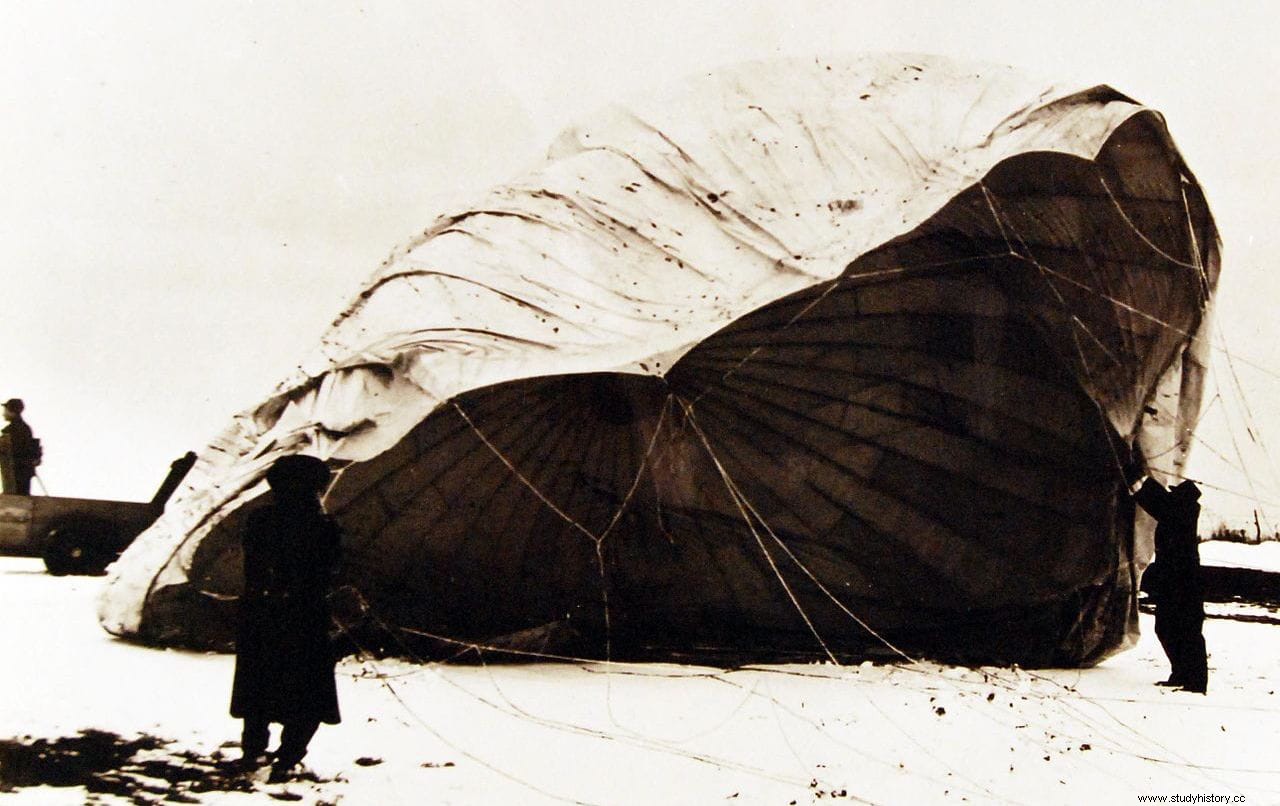
The problem was getting there, because that meant that the aircraft carriers had to cross the entire Pacific avoiding the US Navy, which was still strong despite the losses in Hawaii (part of which, moreover, was already being repaired). Therefore, alternatives began to be studied and the chosen idea came from the Dai kyū Rikugun Gijutsu Kenkyūjo , better known as the Japanese Ninth Army Technological Research Laboratory or Noborito Laboratory , created in 1937 for unconventional weapons research and placed under the command of General Sueyoshi Kusaba. The proposal of the team, which was led by chief engineer Teiji Takada, was surprising:to use balloons like the type B, which was used by the navy for meteorological purposes.
Actually it was not a novelty because Great Britain had already used them against Germany, on a larger scale although smaller and with greater simplicity in its mechanisms:the Operation Outward . As for the Japanese, they were hydrogen hot-air balloons, about 10 meters in diameter (one meter more than the previous ones) and about 540 cubic meters, which would transport bombs between 12 and 15 kilos - explosives of TNT or picric acid , other termite-type, as well as another 5 of incendiary material, all with their respective casings, apart from the sandbags that would be used as ballast and the aluminum box that contained an altimeter plus the ignition device. In total, the weight would reach 454 kilos, so it was necessary to reinforce the balloons to prevent leaks.
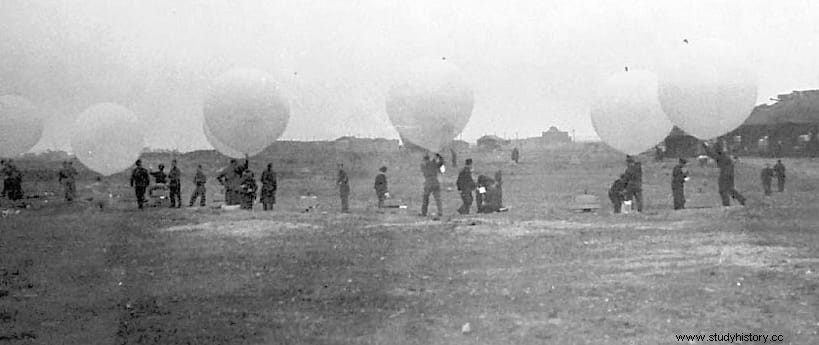
For this, the conventional rubber silk was replaced by washi , a type of paper made by hand in Japan with mulberry leaves and that had the quality of being very resistant, as well as waterproof. It had the problem that it was made in pages, so it was necessary to put together four for each sheet; konjac was used for this , an oriental tuber that was also used as an adhesive (and that the designated personnel, mainly adolescent girls, took advantage of to eat due to the scarcity that the country suffered).
In addition, the laboratory had grown cultures of anthrax, smallpox, and Yersinia pestis (plague bacteria) that were planned to also be incorporated into the balloons but that was finally not done due to the express prohibition of the emperor. Therefore, the plan focused on bombs and getting the balloons to reach the American continent and release their cargo at the desired time. The first was not too complicated, since it would take advantage of a jet stream, a fast and narrow flow of air discovered in the 1920s by the meteorologist Wasaburo Oishi, which circulated at a high altitude (more than 9,000 meters) and blew eastwards at across the Pacific Ocean, so that the balloons could reach their target in three days, traveling nearly 8,000 kilometers.
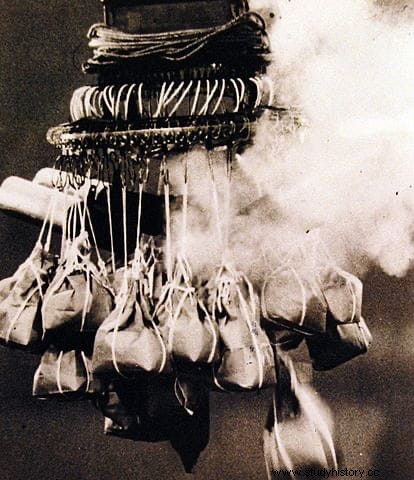
But, in turn, this entailed a technical difficulty. During the day, with the heat from the sun, the balloons would expand and rise while at night, as the air cooled, they would lose altitude, so it was necessary to find a way to compensate for these changes. It was achieved by means of a device connected to the altimeter:when it marked less than 9,100 meters, it automatically fired a load that released two bags of ballast (the bags were hung from an aluminum wheel) and, vice versa, if they exceeded 12,000 meters a valve was activated that expelled hydrogen and lowered the balloon; the same thing happened if excess pressure was detected.
As for the second question, that of dropping the bombs, in reality that was not what was planned exactly, but rather to drop the whole balloon. This would happen, according to the Japanese engineers, after exhausting the 36 bags of ballast, planned as we said for three days. By then, the device would already be flying over North America and another device would light a hanging fuse that, 84 minutes later, would detonate, destroying the balloon and causing the explosive charge to fall. The process was tested in September 1944 and was successful, thus the first fūsen bakudan It was launched two months later from the island of Honshu, taking advantage of a high-pressure front and with a special motivation because between the two dates, Japan was bombed by a squadron of B-29s.
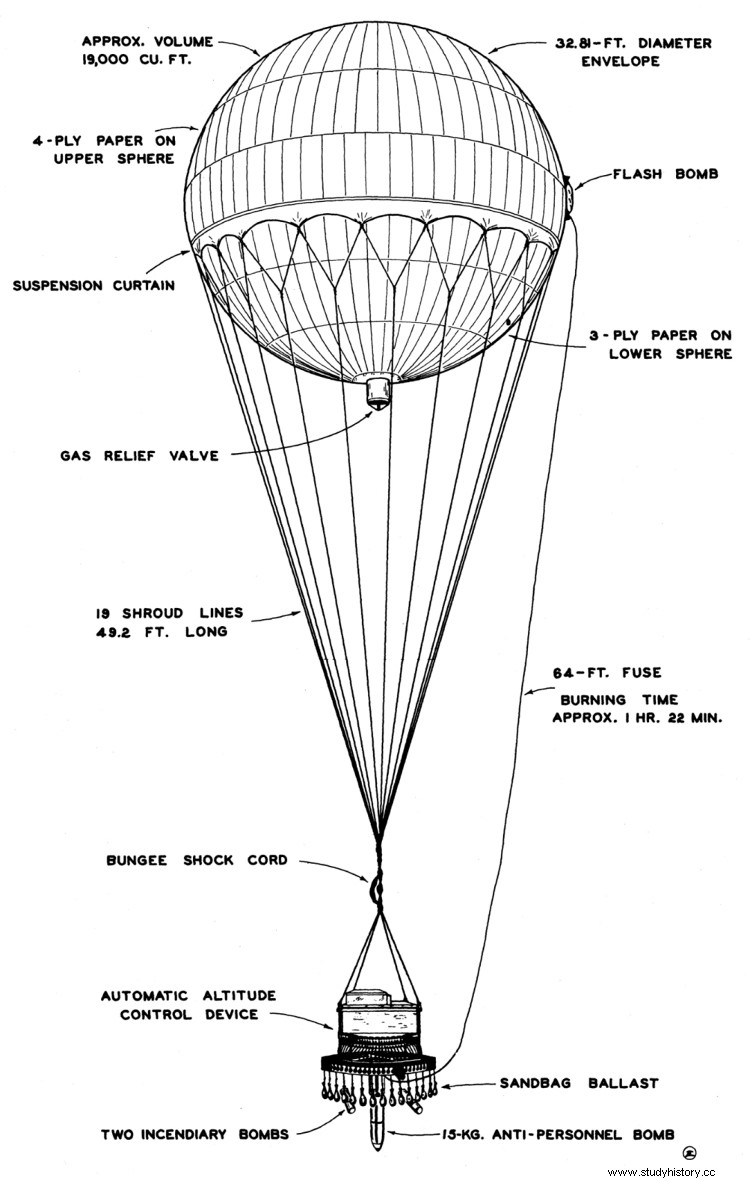
Before starting the operation itself, there were launches of sounding balloons so that the meteorological stations could check the conditions. The collected reports concluded that November was the month in which the jet stream began to blow more strongly, a situation that would last until March; something that favored the crossing and that is why it was in that period when the balloons were launched. Three task forces totaling 1.5 thousand men spread over 19 bases in Ōtsu (Ibaraki Prefecture), Ichinomiya (Chiba) and Nakoso (Fuskushima) were responsible for this. They had the capacity to release about 200 balloons a day, but it is not clear what the total number was, estimating it to be around 9,000.
The Japanese were not naive enough to believe that everyone would reach their goal, far from it. In fact, they calculated that 10% would do so, that is, about 900, but even that number turned out to be too optimistic. In the end only 285 made it through, even though the American defenses were not very effective. On November 4, a surveillance plane discovered the first of the balloons floating in the sky over San Pedro, Los Angeles. It was one of those that carried radiosonde instead of explosives, but since several more were detected in Wyoming and Montana before the end of the month, the alarms went off.
Little by little balloons were found in Alaska, Hawaii, Oregon, Kansas, Iowa, Washington, Idaho, South Dakota and Nevada. In this last state, cowboys used the cloth of one to accumulate hay, while that of another was brought before the authorities on the back of a donkey and a third was shot down by the air force. Over time, the government managed to collect seven balloons and destroy barely twenty in flight, something that proved to be very difficult because, surprisingly, the fūsen bakudan they were moving fast enough and at too high an altitude. And they kept coming, several of them also to various regions of Canada.
Some exploded, revealing that it was an attack; especially after the analysis of the impact zone of some allowed to find fragments of shrapnel or pieces of washi paper fell on the roofs of some Californian houses. The notice was passed on to the navy and the air force so they could try to intercept them but, as we said, it was complicated. The great fear of the government was in the possibility of causing forest fires and, since the personnel available to fight them was scarce, the Firefly Project was organized. , which assigned some 2,700 men - between soldiers and civilians - to possible emergencies of this type. They established themselves in strategic points and close to places of greater risk, reinforced with conscientious objectors. Interestingly, that was the germ of the United States Forest Service current.
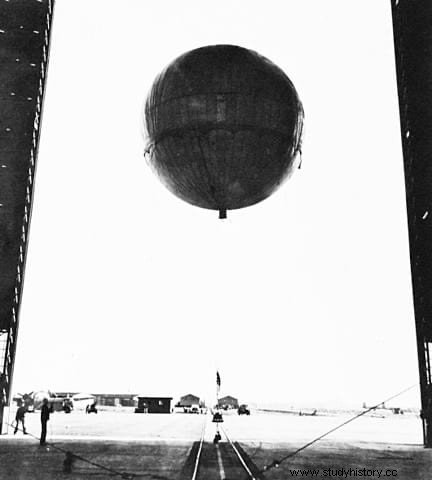
There were small fires and Project Firefly claimed one death and 22 injuries, all from the 555th Airborne Battalion (which was made up entirely of African-Americans), but their interventions were fewer than anticipated. This was because the dates chosen by the Japanese to launch Operation Fu-Go They were convenient for crossing the Pacific but, on the other hand, they were adverse for starting fires, since in those months -remember, between November 1944 and March 1945- there was the highest level of rainfall on the American West Coast and the forests were covered with snow or too wet. It was autumn-winter, in short.
Still, there were more fatalities. All at once, caused by the bomb exploding in one of the balloons. It was in the Gearhart Mountain Wilderness, a wooded area in Oregon that a Protestant pastor and his pregnant wife had taken on a picnic five children from Sunday school. While he was parking the car, the others discovered the remains of a balloon and when they were moved they burst, killing them. This incident led to a reconsideration of government policy, which until then kept what was happening a secret, going on to warn the population. That is why in Japan the opportunity was taken to exaggerate the very modest success of the fūsen bakudan , actually a complete failure.
And the fact is that, although remains of balloons continued to be found all over the North American Pacific coast, which initially led one to think that they were launched from Canadian territory itself, carried by submarines (several had been detected in those waters), the chemical analysis of the sand from the bags indicated that they had to come directly from Japan and the exact point was even located, the area around Ichinomiya. An aerial reconnaissance was immediately carried out which, in fact, showed the hydrogen production plants and in April a squadron of B-29 bombed them, destroying two of the three that were there and putting an end de facto to Operation Fu-Go .
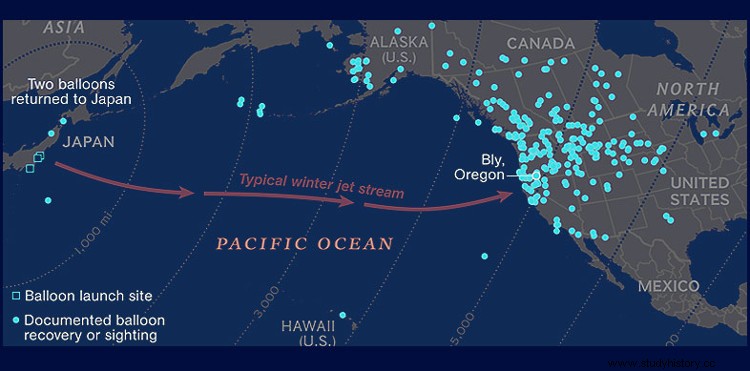
We have seen that a tenth of just over 9,000 balloons launched arrived, of which the Americans collected less than three hundred over the following decades (the last one to date appeared and detonated in a controlled manner in 2014), a good part of which are exhibited in museums, whole or in pieces. One even fell near the Hanford Site, the facility where part of the Manhattan Project was developed and where the plutonium for the Trinity atomic bombs was manufactured. (the first, exploded in the desert of New Mexico) and Fat Man (the one launched on Nagasaki), causing a short circuit in the electrical system. Now, what happened to the rest?
Well, it is believed that the vast majority fell into the ocean, unable to reach America. This was because Japanese estimates of the jet stream were incorrect:instead of the expected 30 to 65 hours the jet stream would take to push balloons from Japan to the Americas, the average was 96 hours. . With the Operation Fu-Go the last Japanese trick against the USA is over. In August of that same year, Little Boy and the aforementioned Fat Man They put an end to the war.
